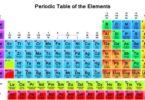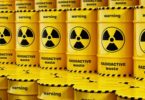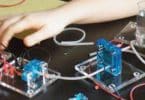Which one of the following is not a accessory pigment?
(a) Chlorophyll ‘a‘
(b) Chlorophyll ‘e‘
(c) Phycocyanin
(d) Xanthophyll
In physiological anisogamy
(a) Gametes are morphologically similar but physiologically dissimilar
(b) Gametes are morphologically dissimilar but physiologicaly similar
(c) Gametes are morphologically and physiologically similar
Red oceanic tides can be due to
(a) Diatoms
(b) Red algae
(c) Dinophyceae
(d) Blue-green algae
Which among the following do you consider as the best evidence to show that two species of algae are closely related?
(a) They both respire and release CO2
(b) They both are found in the same habitat
(c) They both have same type of pigments
Who is popularly known as the “Father of Phycology”?
(a) Fritsch
(b) Papenfus
(c) Smith
(d) Morris
In the Chlorophyta, the reserve food of protein surrounded by starch, form a compact body termed
(a) Paramylum
(b) Pyrenoid
(c) Volutin
(d) Eye spot
Which of the following algae is symbiotic and nitrogen-fixing?
(a) Spirogyra
(b) Cladophora
(c) Anabaena
(d) Oedogonium
Red eye spot containing haematochrome is meant for
(a) Photosynthesis
(b) Respiration
(c) Photoreception
(d) Movements
Unlike other algae, diatoms do not readily decay due to
(a) Siliceous wall
(b) Mucilaginous wall
(c) Waterproof cell wall
(d) Nonliving cells
Which of the following pigments is present in all algae?
(a) Chlorophyll–a
(b) Chlorophyll–b
(c) Chlorophyll–c
(d) Chlorophyll–d
Fungi differ from algae in being
(a) Coenocytic
(b) Without motile gametes
(c) Without unicellular forms
(d) Without chlorophyll and possessing chitinised wall
Spirogyra is a
(a) Fresh water and free floating alga
(b) Marine and free floating alga
(c) Fresh water and locomotory alga
(d) None of these
Related: Percentage aptitude questions with answers
The thallus of Volvox is called
(a) Trichome
(b) Coenobium
(c) Coenocyte
(d) Parenchymatous
Which of the following may be called fission algae?
(a) Nostoc
(b) Oedogonium
(c) Volvox
Which of the following is obtained from algae?
(a) Wax
(b) Butter
(c) Chocolate
(d) Carragenin
Which algae was the first photosynthetic organism?
(a) Green
(b) Red
(c) Cyanobacteria
(d) Brown
Algae which form motile colony is
(a) Volvax
(b) Nostoc
(c) Spirogyra
(d) Chlamydomonas
Gametes formed by meiosis are called
(a) Coenogametes
(b) Meiogametes
(c) Mitogametes
Algae often float on the surface of the water during the day but sink during the night due to
(a) Evolution and trapping of oxygen bubbles during the day in their photosynthesis
(b) Becoming light as they consume most of their food in the night
(c) warming action of the sun during the day
(d) Release of absorbed air by warming of water
Chlamydomonas does not occur in
(a) Fresh water
(b) Pond and lake
(c) River
(d) Ocean
Related: Young Modulus questions
Muramic acid is present in the cell walls of
(a) Yeast
(b) Bacteria
(c) Rhizopus
(d) Green algae
Algae are important, we should study algae because
(a) They are good organisms to experiment with
(b) They can be grown in large tank cultures
(c) They may form important constituent of human food (diet) in future
(d) They produce oxygen and organic acids
The association of algae and fungi for the formation of lichens is an example of
(a) Parasitism
(b) Mutualism
(c) Amensalism
(d) Predation
Fusion of mature individuals which directly act as gametes, is called
(a) Isogamy
(b) Anisogamy
(c) Hologamy
(d) Autogamy
Sexual reproduction in which cells of two different Spirogyra filaments conjugate is known as
(a) Lateral conjugation
(b) Scalariform conjugation
(c) Parthenocarpy
(d) Azygospory
The giant algae or sea weeds belong to class
(a) Phaeophyceae
(b) Rhodophyceae
(c) Chlorophyceae
(d) Xanthophyceae
Carrageenin, a jelly-like substance, is derived from marine algae known as
(a) Kelp
(b) Diatoms
(c) Flagellates
(d) Irish moss
Algal cell wall is composed of
(a) Chitin
(b) Cutin
(c) Cellulose
(d) Suberin
Related: Diversity of Life Pre-Unit Test Quiz
Helotism is a term used for the symbiosis of Algae with
(a) bacteria
(b) bryophytes
(c) pteridophytes
(d) fungi
Palmella stage is produced
(a) In rainy season
(b) During unfavourable conditions
(c) During favourable conditions
Which algae shows the absence of chlorophyll ‘b‘?
(a) Green
(b) Red
(c) Blue-green
(d) Brown
In biotechnological studies, the alga that is exploited as a rich source of protein is
(a) Spirogyra
(b) Spirulina
(c) Chlamydomonas
(d) Scytonema
When three Spirogyra filaments are participating in conjugation, the possibilities are that
(a) The middle one may be female and outer ones are male
(b) The middle one may be male and outer ones are female
(c) Both (a) and (b)
(d) None of the above
Pyrenoids are made up of
(a) Core of starch surrounded by sheath of protein
(b) Core of protein surrounded by fatty sheath
(c) Proteinaceous centre and starchy sheath
(d) Core of nucleic acid surrounded by protein sheath
The classification of the group algae is based on
(a) Nature of shape
(b) Nature of pigment
(c) Nature of length
In which of the following algal classes the starch and oil are present
(a) Chlorophyceae
(b) Phaeophyceae
(c) Rhodophyceae
(d) Xanthophyceae
Related: Gravitation problems
Prokaryota includes
(a) Mycoplasma
(b) Ulothrix
(c) Fungi
(d) Mycoplasma and blue-green algae
A filament of an alga can be differentiated from that of a fungus by
(a) Cells are uninucleate in algae whereas they are multinucleate in fungi
(b) Chlorophyll present in algae and absent in fungi
(c) The presence of cellulose cell wall and chlorophyllous cells in algae while chitinous cell wall and non-chlorophyllous cells in fungi
(d) The algae are green and fungi are non-green
Zygospore is
(a) Haploid
(b) Polyploid
(c) Diploid
Spirogyra differs from Mucor in having
(a) Uninucleate gametangia
(b) Multicellular gametes
(c) Anisogamete
(d) Sexual reproduction
Floridean starch is found in
(a) Chlorophyceae
(b) Rhodophyceae
(c) Myxophyceae
(d) Cyanophages
Which of the following groups of plants are highly useful in increasing soil fertility?
(a) Red algae
(b) Fungi
(c) Bacteria
(d) Bryophytes
The element present in thyroxin is obtained from
(a) Laminaria
(b) Polysiphonia
(c) Porphyra
(d) Gelidium
Botanical name of sea palm is
(a) Polysiphonia
(b) Postelsia
(c) Ectocarpus
(d) Macrocystis
Related: d and f block elements question bank
Most important alga in research centres is
(a) Mycoplasma
(b) Spirogyra
(c) Chlorella
(d) Blue-green algae
Algae present in soil fixes atmospheric __
(a) oxygen
(b) nitrogen
(c) carbon-dioxide
(d) helium
Sea weeds are important source of
(a) Chlorine
(b) Fluorine
(c) Iodine
(d) Bromine
Brown algae is characterised by the presence of
(a) Phycocyanin
(b) Phycoerythrin
(c) Fucoxanthin
(d) Haematochrome
Related: Satellite communication mcq
Alga is useful to man because
(a) They help in restoring the fertility of the soil
(b) They help reduce pollution and clear the atmosphere
(c) They can be grown in tanks
(d) Of their high protein content, some algae may be used as future food
Batrachospermum is found in
(a) Marine water
(b) Fresh water
(c) Tree
(d) Arctic zone
Spirogyra increases its body length by the division of
(a) The apical cell
(b) The basal cell
(c) Every cell of the body
(d) Accumulation of food in his body
Pyrenoids in green algal cells are related to
(a) Starch formation
(b) Protein storage
(c) General metabolism
(d) Enzyme secretion
Which of the following does not contain chlorophyll?
(a) Fungi
(b) Algae
(c) Bryophyta
(d) Pteridophyta
In lichens, the following organisms are in symbiotic association with Algae:
(a) Fungi
(b) Bacteria
(c) Protozoa
Little leaf of brinjal is caused by
(a) Virus
(b) Fungus
(c) Mycoplasma
Related: Krebs cycle quiz
The alga causing Red snowball in the alpine region is
(a) Batrachospermum
(b) Oscillatoria
(c) Haematococcus
In the five-kingdom system of classification, which single kingdom out of the following can include blue-green algae, nitrogen-fixing bacteria, and methanogenic archaebacteria
(a) Monera
(b) Fungi
(c) Plantae
(d) Protista
Algae with photosynthetic pigments possess nutrition
(a) Holozoic
(b) Saprophytic
(c) Holophytic
(d) Parasitic
Which of the following is a flagellated alga?
(a) Chlamydomonas
(b) Ulothrix
(c) Spirogyra
(d) Acetabularia
Related: practice Redox reactions quiz
The symbiotic association of fungi and algae is called
(a) Lichen
(b) Mycorrhiza
(c) Mycoplasma
(d) Parasitic root
Which of the following symbiotic associations is not useful as a biofertilizer?
(a) Rhizobium and leguminous roots
(b) Azolla and Anabaena
(c) Algae and fungi
(d) Roots of higher plants and fungi






